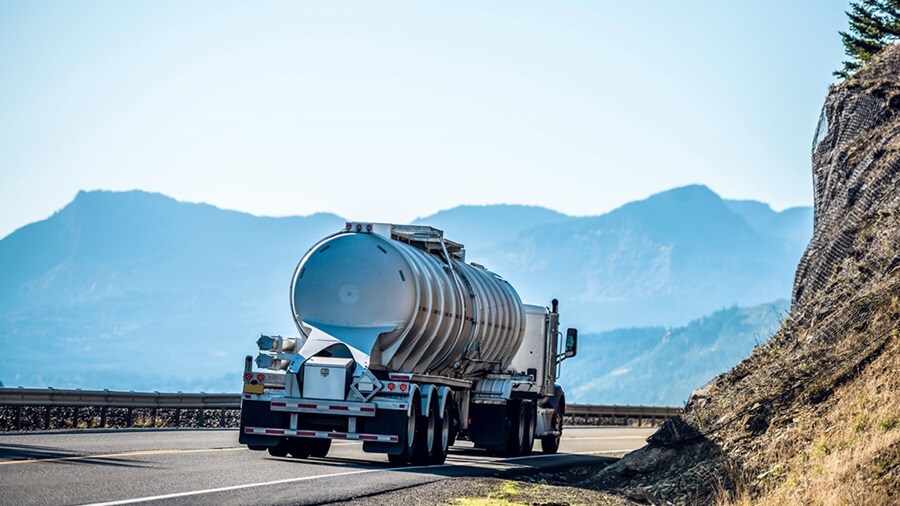Inflation has been a word on just about everyone’s lips over the past six months – and for good reason. From seeing the price of everyday food and consumables rise to facing ever-increasing energy costs this winter, inflation is having a big impact on European shores and beyond.
In fact, according to Statista, the inflation rate across Europe reached an astonishing 10.9% in September 2022 and continued a trend that’s been heading skyward since the early part of the year. Within that, Estonia saw the highest inflation rate among EU countries at 24.1%, while France had the lowest at 6.2%.
To put it into perspective, the highest previously recorded monthly inflation rate in EU countries since January 1997 was 4.4% during the turbulent financial times of July 2008.
So what’s causing such unprecedented inflation levels across the continent? It’s impossible to pin this down to a single event or source, but rather a multitude of factors coming together and creating something of a perfect financial storm.
Stringent Covid-19 restrictions and subsequent economic policies, consumer demand fluctuations, supply chain bottlenecks, freight rates, food shortages and increasing energy prices are all contributing to inflation across Europe, with the war in Ukraine serving as a trigger for a substantial part of the crisis.
Chiefly for companies around the world, inflation has put margins under immense pressure and added a renewed focus on reducing costs across the board – including putting logistics operations and costs under the microscope.

Energy costs on the up
It’s no surprise that energy was the highest-inflated sector in Europe in September, at 22.3%, and it’s clear that the war in Ukraine has been a catalyst for the crisis we find ourselves in.
Over the past decade, Europe has become heavily reliant on gas from Russia, importing as much as 40% of its natural supply in 2021. Germany, Italy, Netherlands and France are the most reliant in the continent, and Germany itself imported 55% of its gas (56.2 billion cubic metres) from Russia last year.
The last six months has seen Russia dramatically cut its supplies of gas to Europe by 88%, causing the wholesale price of gas to rocket up to 210% across the continent.
Energy prices rising are a key driver behind inflation, as they create a ripple effect on global economies and within society. Firstly, we often see tightening monetary policies from governmental organisations like putting interest rates up, which in turn makes for higher borrowing costs for businesses and individuals.
Second, and most apparent, we see the cost of energy in households and within businesses rising to unsustainable levels in some cases. In the UK, for example, household gas and electricity bills have jumped by 80%, while some businesses like pubs are seeing annual rises of as much as 90,000 GBP (equivalent to 103,000 EUR) per year in some cases.
With this comes widespread uncertainty and insecurity amongst human beings, prompting changes in our behaviour and how we spend our money. Everyday necessities end up replacing luxuries; and the less we spend out in the world means the more the economy suffers.

ecommerce is one of many sectors that have been affected by this shift in consumer spending, having boomed to new heights during the course of the pandemic. Online, high-end furniture retailer Made.com, for example, hit sales figures of 315 million GBP in 2020 and 110 million GBP in the first quarter of 2021, but now the company is on the brink of collapse as demand plummets.
Online clothing retailer Boohoo, meanwhile, reported a 58% drop in core earnings in the first half of the year. Revenue is also down 10% thanks to this weaker consumer demand, a significant increase in product returns and increased delivery times for products sold in overseas markets.
An unexpected reduction in demand without supply following suit has led to stock issues for retail businesses and more, as CBS reports that some stores are overstocked by as much as 30% and desperately looking to shift inventory at cut prices.
What this means in the world of logistics is that warehouses are filling up with stock that businesses are unable to sell and subsequently replace with new produce. This in turn has seen containers of stock piling up at ports and terminals across Europe, resulting in high detention and demurrage costs and potentially slowing down operations at the same time.
Christian Grosse, Maersk E-Delivery Chief Product Officer, explains "As warehouses continue filling up in Europe right now, businesses are being left with a decision to make: to peak or not to peak. Energy prices are affecting consumer behaviour and market conditions, which could interfere with the traditional peak season. Sellers have to decide which part of their inventories are discretionary goods and which are non-discretionary. While certain verticals such as lifestyle have more discretionary items, certain essential products will always be less susceptible to inflation. This should play a big role in businesses deciding which stock to discount more strongly during peak season to ensure inventories decrease, and where sellers can apply more patience to not overstretch their bottom line. Ultimately, it means resilience in the supply chain is becoming more and more important. Not just in terms of speeding up the supply chain during peak season, but also being able to slow down when the demand decreases and having a wide range of transportation options when faced with disruption."
Planning ahead intelligently is a big part of supply chain resilience, but economic uncertainty can make this even more of a challenge. And such is the uncertainty in 2022 that Gartner are encouraging supply chain leaders to prepare for a potential recession to come in the next year.
That much remains to be seen, but as energy prices continue to cause a domino effect of issues, getting prepared with your logistics service provider is a good first step for battling what’s to come.
The price of food
One of the most apparent inflation issues for the average consumer is food, which sits as the second-highest-inflated sector in September 2022 at 15.4% – and the situation in Ukraine is playing a fundamental part.
As per OECD, Russia and Ukraine are among the globe’s most prominent exporters of arable crops, particularly cereals and oilseeds. For example, they are the first- and fifth-largest wheat exporters in the world and respectively account for 20% and 10% of global exports.

Together, they produce 20% of the world’s barley and over 50% of our sunflower seeds and oil, while Russia itself accounts for over 15% of global fertiliser exports.
What this has effectively meant since conflict broke out is that getting vital grain, wheat and seeds out of Ukraine to the world has been difficult, while governmental sanctions imposed against Russia means their commodities haven’t fed the global food supply chain as they previously would. Such reduced export availability means prices of food production (and subsequently what we see on the supermarket shelves) have increased dramatically.
Turkey has been a typical illustration of this difficulty, as the country is reportedly one of the biggest importers of produce from both Russia and Ukraine (its imports of cereals from Ukraine alone stood at 994 million USD in 2021, per Trading Economics). Other factors are certainly considered, but the fact remains that Turkey is now facing some of the highest inflation rates in the world – sitting at 80.2% in August 2022.
Combatting this impact is incredibly complicated and could be a case of finding a new balancing act for supply and demand: potentially increasing the production of cereal and oilseed in other countries for supply, while reducing their use in non-food commodities to help with demand for human consumption.
For logistics providers, it’s been about finding ways to facilitate international trade and enabling agricultural exports from Ukraine. There’s no telling when the end of the war will be at this stage, but as repairing domestic infrastructure could take some time, the likes of sourcing alternative routes and enabling the use of different ports could be an important, long-term solution for Ukraine and the world.
Oil nearing record levels
The price of oil is another area that has drastically affected inflation and consumer spending in the economy in recent months. Crude oil reached the heights of 123.21 USD per barrel in 2022, eclipsed only by the summer of 2008 at 147.27 USD.
During the Covid pandemic, the price of crude oil fell considerably as businesses closing and members of the public not travelling reduced energy demands. However, as life returned to some sort of normality and demand rose, suppliers have struggled to keep up and prices have increased.

Also contributing is the US dollar surging to all-time highs against other major currencies: the Great British Pound, the Euro, Chinese Yuan and Japanese Yen. As oil used to make petrol is priced in dollars, a weaker local currency makes fuel all the more expensive.
Elsewhere, sanctions against Russia mean many countries have banned imports of Russian oil, thus driving up demand and subsequent prices from other producers. EU data shows that Russia supplied 25.9% of the EU’s petroleum oil in 2021 – and by the second quarter of 2022, this share was just 16.7%.
The price of fuel is one of the many contributing factors to heightened ocean and inland freight rates around the world – up seven times on average pre-pandemic levels – although the overall situation is complicated.
Logistics as we know it has been spun out of rhythm over the past two years, with supply and demand discrepancies, low reliability, global port congestions, labour shortages, capacity constraints and more all coming together to put pressure on rates.
However, while the circle of inflation affecting freight rates and freight rates affecting inflation is set to continue in the short-term, the outlook is positive for pressure coming down in the not-too-distant future – albeit not to the levels seen before Covid due to inflation’s impact on operational costs.
Karina Trepanier, Senior Market Manager, Europe Regional Ocean Management at Maersk, explains "As bottlenecks are resolved across Europe and consumer demand returns to normal levels, we can expect to see welcome improvements to ocean schedule reliability. This in turn will result in better vessel space and equipment availability, subsequently causing ocean freight rates to stabilise – although still above what we saw pre-pandemic. However, the market remains incredibility volatile and we’re very much expecting the unexpected in 2023. Such volatility demands robust planning to make the supply chain as resilient and flexible as possible."
Inflation has very much added to the unpredictable nature of 2022, and there’s still a long way to go before financial parity returns and the benefits are felt for businesses and within society.
However, inflation has been just one of the contributing factors behind supply chain disruption over the course of the year, as a number of issues have come together from every which direction to pose challenges.
As more of the same uncertainty is expected in 2023, the overwhelming call is to make supply chains as resilient as possible. Preparing for every eventuality is an absolute must to bounce back from future adversity.
Sign up to The Logistics Pulse newsletter
You did it, welcome onboard!
We're sorry, but there was a problem sending your contact request.
Please review the form fields and ensure all required information is provided correctly. If the issue persists, please contact our support team for further assistance.
Sign up to The Logistics Pulse newsletter
Receive our insights directly in your mailbox by signing up through this form and enter a world of truly integrated logistics. Get inspired by our selection of articles that help you navigate supply chains, understand industry trends, and shape your logistics strategy. You can unsubscribe anytime.













